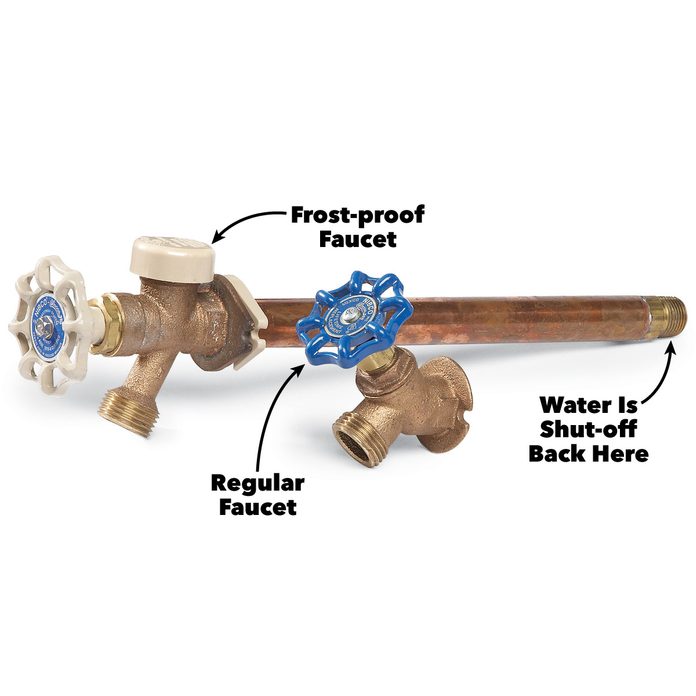1
/
11
How to Shut Off Main Water Valve
Before you head out of town for an extended period of time, it’s a good idea to shut off the water main, i.e. the line to your house. That’s just about the surest way there is to prevent water damage while you’re away.
Many water meter setups have two valves, one on the street side of the meter and one on the house side. If you live in a colder climate, you’ll typically find the main shutoff in the basement near the front of the house. In warmer climates, it will be outside your home attached to an exterior wall or in an underground box with a removable lid.
If you’ve never shut off the main water valve before, test it before you leave on vacation. You’ll need an adjustable wrench, a bucket and slip joint pliers. Turn on a faucet somewhere in the house and shut off the main water valve. All water flow should stop. An old gate valve can break, so be gentle when you’re handling it. If the valve is stuck, leave it alone. If it leaks or doesn’t shut off all the way, have a licensed plumber replace the valve or replace it yourself if you’re comfortable with a straightforward plumbing project. You’ll need to call your water department (and possibly pay a small fee) to have the water to your house turned off at the curb stop while you make the repair.
If you have a well, shut off the electrical switch for the well when you leave for an extended period so it won’t pump any water while you’re gone.
2
/
11
Types of Water Shut Off Valves
There are two types of main shutoff valves for a main water line. Gate valves are common in older homes. The valve closes when a wedge-shaped brass gate is lowered into a slot. These are designed to be fully open or fully closed. Water flowing through a partially open gate valve can wear away the metal and cause the valve to fail over time.
Ball valves, which contain a pivoting stainless steel ball with a hole drilled through the center, are less prone to wear. These have a lever handle that needs to be turned 90 degrees to turn the water on or off. You can immediately tell if it’s open or not: In the closed position, the lever is perpendicular to the pipes; in the open position, it’s parallel. There are types of water shut-off valves available for you to explore.






























